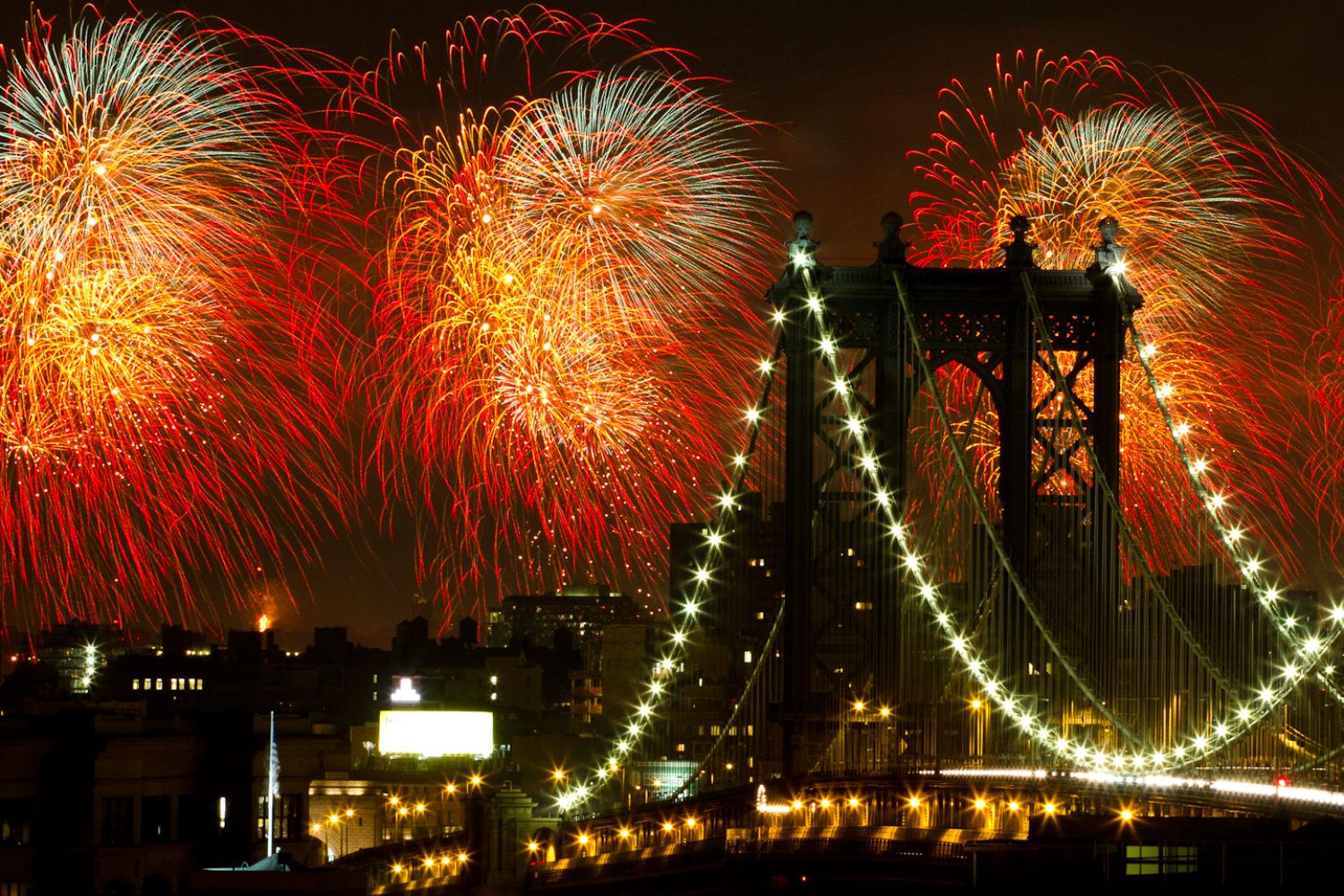Fireworks displays are a great photographic subject. They are beautiful to watch, and create some wonderfully abstract streaky patterns in our photos. They also often bring back memories of a special occasion or celebration, meaning that they can become some of your most cherished pictures.
Photographing fireworks can be deceptively difficult. The rapid movement and changes in colour can make focusing and exposure very tricky to get right, and can result in disappointingly blurry, underwhelming shots.
However, with practice, you can teach yourself the techniques needed to photograph fireworks in all their glory. It requires a bit of forethought and planning, but can transform your fireworks photography, leaving you with images which are sharp, interesting, and bursting with colour.
Get There Early
This is very important, especially if you expect the firework display to be busy (which they usually are). Arriving early gives you time to have a good look around and choose the best place to shoot from. It also gives you time to set up your camera well before the first firework is set off.
Arrive in plenty of time to choose a good spot and get your equipment set up. Image by Barry Yanowitz.
Stay upwind of the fireworks if possible, to avoid smoke blowing towards you during the display and ruining your photos.
Find an Interesting View
Find a spot with an unobstructed view of the area where the fireworks will be. I also like to include some interesting scenery, to provide the photo with context. Good examples are the surrounding landscape, nearby buildings or the watching crowd.
Include some surrounding detail to add context to the firework display. Image by Eke Miedaner.
When framing your shot, try to picture in your mind where the fireworks will be exploding. Of course this can be very difficult, so if you are in any doubt, use a wider angle than you think is necessary. You can then crop the photo down to size later, which is much better than missing out on a great shot because you chopped off half the firework.
Keep Your Camera Steady
A tripod is absolutely essential when photographing fireworks - you will be using a very long exposure (usually a few seconds), meaning that camera shake is a real problem.
A tripod is essential to avoid camera shake and capture sharp trails. Image by Travis Nep Smith.
A remote or cable release might also be a good idea to further reduce camera shake. Using your camera's self-timer would have the same effect, but it's hard enough timing firework photographs normally, and the added lag of a self-timer makes it almost impossible.
Shoot in Manual Mode
Fireworks are a difficult subject to photograph, and your cameras automatic mode just won't be able to cope. Switch to manual mode and try the following settings as a starting point, adjusting as necessary:
-
Aperture - fireworks are very bright, and if your aperture is too wide you'll lose colour and end up with washed out streaks. Use a fairly narrow aperture (say f/8) - this will also help to keep more of your scene in focus.
-
Shutter speed - you'll need a few seconds of exposure to capture the movement of your fireworks. If possible use bulb mode so that you can open the shutter as the firework is going up, and close it after it has finished exploding.
-
Focusing - manually focus about one third of the way between you and the fireworks. This will give you maximum depth of field, keeping your whole scene as sharp as possible. (This is based on the idea of hyperfocal distance).
-
ISO - use a low ISO to reduce digital noise and prevent washing out the colours of your fireworks.
-
Flash - some cameras will automatically activate the flash due to the darkness, but it will have absolutely no effect on your photo other than to wash out the foreground and annoy people, so turn it off.
Use Trial and Improvement
Firework displays usually last a long time, with the most spectacular fireworks saved for the end. This gives you plenty of time to review your results as you go along, and make any necessary adjustments to your camera's settings.
Adjust your settings as you go so that they're perfect by the finale. Image by photoholic1.
Experiment With Multiple Exposures
You can give your firework photography more impact by capturing several firework bursts in a single frame. To do so, set your camera to bulb mode and open the shutter for a long time. Then hold a piece of card in front of your lens to block out the light between fireworks, removing it every time a new firework explodes.
